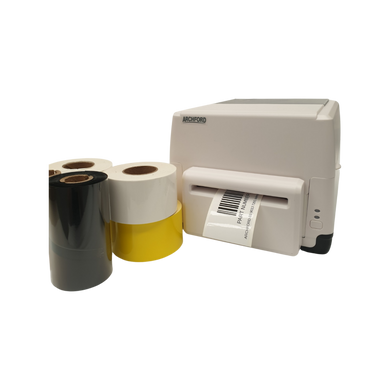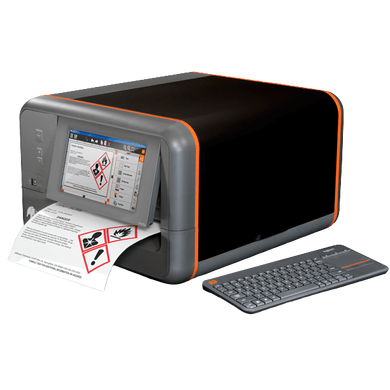Barcode label printers have revolutionized the way businesses manage inventory, track assets, and enhance operational efficiency. These devices play a crucial role in various industries, offering precision and speed in barcode printing. Let’s delve into the intricacies of barcode label printer and how they contribute to modern business operations.
Types of Barcode Printers
Direct Thermal Printers
Direct thermal printers utilize heat-sensitive paper to produce high-quality labels without the need for ink or toner. Ideal for applications requiring temporary labels, such as shipping labels and receipts.
Thermal Transfer Printers
Thermal transfer printers employ heat to transfer ink from a ribbon onto the label material, resulting in durable and long-lasting labels. Widely used for product labeling and asset tracking in industries where durability is paramount.
Inkjet Barcode Printers
Inkjet barcode printers utilize liquid ink to produce high-resolution labels with vibrant colors. Suitable for applications requiring detailed graphics or color-coded labels, such as product packaging and marketing materials.
Benefits of Barcode Printers
Increased Efficiency
barcode label printer streamline inventory management processes, reducing manual errors and improving productivity. With automated label printing, businesses can expedite tasks such as stocktaking and order fulfillment.
Accuracy in Inventory Management
By accurately tracking inventory levels and movement, barcode printers help businesses maintain optimal stock levels, minimize stockouts, and prevent overstock situations. Real-time data capture ensures inventory accuracy throughout the supply chain.
Cost-Effectiveness
Investing in a barcode label printer can lead to significant cost savings in the long run. By eliminating manual data entry errors and streamlining processes, businesses can minimize labor costs and improve overall operational efficiency.
Factors to Consider
Resolution and Print Quality
When selecting a barcode printer, consider the desired print resolution and quality. Higher resolutions are suitable for applications requiring small barcode sizes or detailed graphics.
Connectivity Options
Barcode printers offer various connectivity options, including USB, Ethernet, and wireless connectivity. Choose a printer with connectivity features that align with your business needs and infrastructure.
Print Volume and Speed
Evaluate the expected print volume and speed requirements of your business. High-volume operations may require printers with fast printing speeds and large media capacities to ensure uninterrupted workflow.
Maintenance Tips
Regular Cleaning and Inspection
To maintain optimal performance, perform regular cleaning and inspection of your barcode printer. Remove dust and debris from the printhead and platen roller, and inspect for any signs of wear or damage.
Proper Storage and Handling of Supplies
Store barcode label supplies in a clean, dry environment away from direct sunlight and extreme temperatures. Proper handling and storage help prevent label material degradation and ensure consistent print quality.
Troubleshooting
Print Quality Issues
If encountering print quality issues such as smudged or faded labels, check the printhead for debris or damage. Adjust print settings as needed, and ensure the label material is compatible with the printer specifications.
Connectivity Problems
For connectivity problems, verify the cable connections and network settings. Reset network configurations if necessary, and ensure the printer firmware is up to date to resolve compatibility issues.
Paper Jams
To resolve paper jams, follow the manufacturer’s guidelines for clearing jams safely. Inspect the paper path for obstructions, and ensure the media is loaded correctly to prevent future jams.
Importance in Various Sectors
barcode label printer play a vital role across diverse sectors, including:
Retail
In retail environments, barcode printers facilitate efficient pricing, labeling, and inventory management, enabling seamless checkout experiences and accurate stock tracking.
Manufacturing
In manufacturing facilities, barcode printers streamline production processes, enabling accurate labeling of products, components, and packaging materials. Real-time tracking enhances supply chain visibility and operational efficiency.
Healthcare
In healthcare settings, barcode printers aid in patient identification, specimen labeling, and medication tracking, reducing errors and improving patient safety. Accurate data capture enhances medical inventory management and regulatory compliance.
Future Trends
Integration with IoT
The integration of barcode printers with Internet of Things (IoT) technology enables real-time monitoring and remote management capabilities. Enhanced connectivity and data analytics empower businesses to optimize operations and drive innovation.
Enhanced Security Features
Future barcode printers are expected to incorporate advanced security features such as encryption and authentication protocols to safeguard sensitive data and prevent unauthorized access. Compliance with industry standards ensures data integrity and confidentiality.
Conclusion
barcode label printer continue to play a pivotal role in modern business operations, offering unparalleled efficiency, accuracy, and cost-effectiveness. As technology evolves, these devices will further enhance productivity and drive innovation across industries, paving the way for a more connected and streamlined future.




